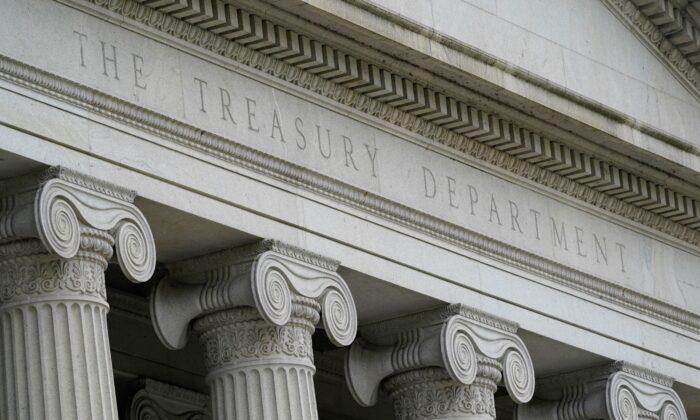You began your retirement plan with plenty of money to pay bills. Your plan expectation of a reasonable inflation rate worked for years. But now one of the key assumptions of your plan has collapsed.
Annual inflation rose to 6.8 percent in November, the highest rate since 1982.
That’s why, for millions of elderly Americans living on fixed incomes, inflation is the cruelest tax, according to critics. It hurts their ability to maintain a standard of living.
“A retired person is said to be living on a fixed income for a good reason. In turn, coping with rising prices when one’s income is fixed is far more difficult that for a younger person who can negotiate a pay raise from their employer,” Peter Palion, an adviser in East Norwich, New York, told the Epoch Times.
The problem of long-term high inflation hurts senior citizens in a unique way, another adviser added.
Most retirees, notes Jordan Benold, an adviser in Frisco, Texas, either have Social Security and/or receive a monthly pension. But pensions have a downside, he says.
“Pensions usually do not have inflation adjustments, which means when the prices of goods go up, the elderly cannot afford to pay for the same basket of goods,” Benold said.
Even relatively small inflation rates can have a dramatic effect on elderly living standards.
The Secure Retirement Institute Retail Retirement Reference Center conducted research that shows if inflation increases to 3 percent, the average retiree stands to lose $117,000.
It’s challenging for the elderly to make up for these price increases, advisers say. That’s because most are past their prime earning years and many live on a budget that can’t adjust to higher prices.
This has had a dramatic effect on the ability of the retiree to maintain a standard of living.
“The impact of inflation has caused Americans’ living expenses of $50,000 in 1983 to go up to $133,527 in 2021, an increase of more than 160%,” according to the Retail Retirement Reference Center. “The 1983 retiree’s $100 income is now worth about $37.45 in purchasing power of goods and services in 2021.”
Inflation, advisers explain, affects retired Americans more than workers for several reasons: Most retirees generate less income than they did in their working years.
Retirees often devote a substantially larger share of their total budgets to medical and housing costs: Both have gone up faster than normal recently, certainly at a faster pace than most other consumer goods.
“Inflation is difficult for the elderly because the size of their income is normally outside their control,’ adds Zachary Bachner, an adviser in Sterling Heights, Michigan.
Advisers also note that most people face the heaviest medical bills in their last decade or so.
According to the Centers for Medicare and Medicaid Services (CMS), per capita, health spending for elderly Americans was recently three times that of a working adult and five times that of children, averaging $19,098 annually.
In 2018 the CMS estimated that healthcare expenditures increased by 4.6 percent overall, according to the most recent data available. Over that period, inflation averaged 2.4 percent.
So even when inflation is low, retirees are hit harder than others since costs that affect them most, such as health care, tend to continue to rise, according to advisers.
The goal of all retirement planning is ensuring assets outlive the retiree. That means retirement investments should be big enough to weather bad times; times when inflation rates are high and one’s investment returns are low.
An Arizona adviser believes the problem is some retirees have plan assets that can be overwhelmed by inflation.
They have “poor inflation hedging assets,” said Matthew Aaron Benson, an adviser in Chandler, Arizona.
He says normally many retirees try to avoid risk by adding more bonds to their portfolio. But this strategy sometimes fails, Benson said, because eats up investment gains.
“Once you enter a rising rate environment combined with an inflationary environment you can have fixed income assets that in real returns after factoring in inflation just safely lose money,” Benson explains.
Some of these retirees, Benson adds, should consider more stocks, real estate investment trusts or bonds designed to withstand high inflation rates. “For lower risk options one could use a treasury inflation protected securities fund also.”
What else should retirees do?
Monitor your budget; try to find investments that beat or keep up with inflation, Bachner says.
“It is much easier to survive inflation if you have some type of investable asset,“ he added. ”However, that is not the case for everyone. Those who have investable assets can potentially generate a rate of return higher than inflation to offset the rising costs of living.”
That, advisers say, means some retirees should seek higher investment returns through stocks. Stocks are the investment that tends to have the best long term returns but stocks are also volatile. Stocks can have rapid drops and rapid gains, although no one complains about the latter. Some retirees avoid stocks, having bond-heavy portfolios. They should reconsider, says another adviser.
“Some elderly, relying on their experience over the past 30 years, keep their savings in bonds,” notes Linda Erickson, an adviser in Greensboro, North Carolina.
That approach, she contends, sometimes doesn’t produce enough income for retirees facing inflation.
“To insulate a portfolio from a decline in buying power,” Erickson adds, “a good advisor should encourage elderly clients to consider a portfolio of total return, a mix of equity and bonds, which may give those investors a return over and above the rate of inflation.”





